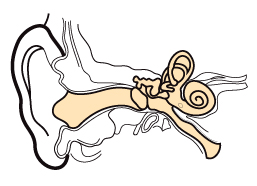 Tinnitus is the perception of sound when no actual external noise is present. While it is commonly referred to as “ringing in the ears,” tinnitus can manifest many different perceptions of sound, including buzzing, hissing, whistling, swooshing, and clicking. In some rare cases, tinnitus patients report hearing music. Tinnitus can be both an acute (temporary) condition or a chronic (ongoing) health malady.
Tinnitus is the perception of sound when no actual external noise is present. While it is commonly referred to as “ringing in the ears,” tinnitus can manifest many different perceptions of sound, including buzzing, hissing, whistling, swooshing, and clicking. In some rare cases, tinnitus patients report hearing music. Tinnitus can be both an acute (temporary) condition or a chronic (ongoing) health malady.
Millions of Americans experience tinnitus, often to a debilitating degree, making it one of the most common health conditions in the country. The U.S. Centers for Disease Control estimates that nearly 15% of the general public — over 50 million Americans — experience some form of tinnitus. Roughly 20 million people struggle with burdensome chronic tinnitus, while 2 million have extreme and debilitating cases.
In general, there are two types of tinnitus:
Subjective Tinnitus: Head or ear noises that are perceivable only to the specific patient. Subjective tinnitus is usually traceable to auditory and neurological reactions to hearing loss, but can also be caused by an array of other catalysts. More than 99% of all tinnitus reported tinnitus cases are of the subjective variety.
Objective Tinnitus: Head or ear noises that are audible to other people, as well as the patient. These sounds are usually produced by internal functions in the body’s circulatory (blood flow) and somatic (musculo-skeletal movement) systems. Objective tinnitus is very rare, representing less than 1% of total tinnitus cases.
